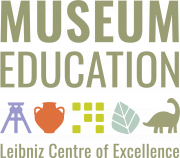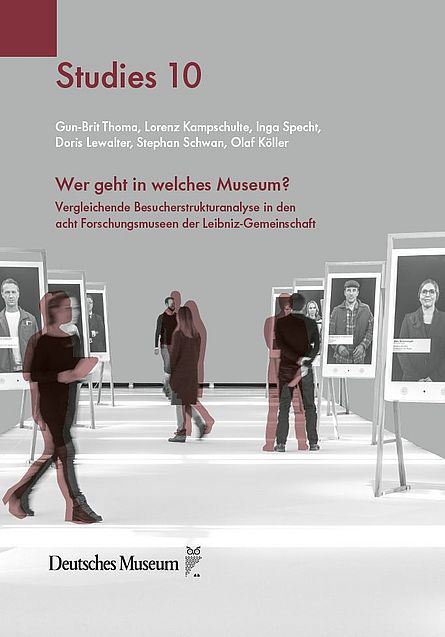Leibniz Visitor Structure Analysis
Theory & Goals
Museums are on a path of fundamental change. The new keywords are not only visitor orientation, but above all dialogue with society, participation and social relevance. Museums are in the process of taking on a more active role in society, moving away from being temples of the Muses and “neutral” places of education, to becoming relevant social actors that are not only places of dialogue, but promote and shape both dialogue and active participation. To be able to do this, it is important to know the museum’s position in society. This is, so to speak, the place from which it is necessary to develop and position the museum. But how is this “social place” of a museum determined? To do this, it is important to better understand why people do or do not visit a museum. Although it is not yet standard practice in many museums, especially smaller ones, to conduct visitor research, awareness of the relevance of visitor data is slowly growing. A better understanding of the visitors and especially the comparison between different museums and museum types can furthermore contribute significantly to the further development of localization in the social space. Against this background, the aim of this study is to attempt a first step in this direction. By comparing eight large museums in Germany with very different thematic profiles, a first database is created that provides information about the characteristics of the visitors in the individual museums. By supplementing the typical socio-demographic data and the museum-related questions with influencing factors such as visitor motivation, leisure and cultural behavior and also psychological measures, a very broad view of the visitors is created. Especially when comparing different museums, these data help to get a better picture of the visitors. This allows museums to respond to challenges, interests, and concerns in a visitor-centered way and to make evidence-based decisions about the design of programs and services in order to position themselves as museums in society and to sharpen their own individual profiles.
Implementation & Sample
The Visitor Structure Analysis was conducted at the eight Leibniz Research Museums at three different time points in 2018/2019. These were chosen so that the major groups of visitors such as tourists, families and regular visitors were broadly represented. The minimum age for participation was 15 years, group visitors (e.g. school classes) were not surveyed. The questionnaire was offered in a German and an English version. A total of 4,541 people completed the questionnaire in full (with a refusal rate of 47%). The age ranged from 15 to 86 years with an average age of 43 years. Among the respondents, 48% were female visitors and 52% were male visitors.
Questionnaire
In order to query the different personal and visit-related aspects, a questionnaire with a total of four question areas was designed. It took about 25 minutes to answer the questionnaire. (1) Museum-related questions: question about general visit frequency, accompanying situation, visit duration, previous museum visit. (2) Demographic information: Information on gender, age, and place of residence. (3) Socioeconomic status: questions about educational and vocational attainment, participation in cultural activities, and cultural capital (4) Educational-psychological constructs: Questions about general attitudes toward museums, personality, motivation to visit, and overall life satisfaction
Selected Findings
On average, 57% of participants were first-time visitors to their respective museums, ranging from 39% to 74%. Of the repeat visitors, 54% have been to the respective museum one to three times, but the last visit was more than three years ago for a large proportion of the visitors (39%). In addition, 60% of the respondents are occasional visitors, i.e. they have visited a museum or exhibition less than five times in the last 12 months. 65% of the visitors planned their visit in advance. Because the survey took place during the visit (rather than at the end), length of stay was asked as “planned length of stay” – as expected, this varies widely between houses. Visiting a museum is a social event for the clear majority of visitors, with nearly 88% visiting with an escort. The fact that a museum visit is a social event is also reflected in the high rating of the factors for visit motivation, “Learning together” and “Shared leisure activity”. The last factor in particular is consistently strong at all museums. The visitors surveyed in the study also have a high level of education on average: 72% have a university entrance qualification, a technical college entrance qualification or a high school diploma, and 49% have a degree from a university or technical college. In addition, the visitors surveyed also have a high level of cultural capital. Overall, the visiting respondents are satisfied with their current lives – their general life satisfaction (M = 7.96, SD = 1.74 on a ten-point scale) is above the German average in 2016/2017 (M = 7.05). The surveyed visitors also exhibit a high degree of openness to new experiences. This means that they are curious, inquisitive, artistically interested and imaginative. Overall, the study paints a picture that confirms the existing literature in many aspects. However, by comparing the types of museums and museums with each other, many aspects emerge in detail that raise new questions and – also by comparing the existing activities at the museums – provide clues for the further development of the museums.
Outlook
In the fall of 2022, another round of surveys was started at the eight Leibniz research museums. Additionally, art museums and science centers are included in the sample. Through this approach, three goals will be pursued: (1) To identify long-term and systematic changes in the museums’ visitor structure. (2) Comparison of visiting behavior before and after Corona (3) To highlight the specificity of Leibniz research museums by comparing them with art museums and science centers. (4) Even better linkage to the existing research literature by including art museums.
Further reading
Thoma, G-B., Kampschulte, L. Specht, I., Lewalter, D., Schwan, S., Köller, O. Wer geht in welches Museum? Vergleichende Besucherstrukturanalyse in den acht Forschungsmuseen der Leibniz-Gemeinschaft Deutsches Museum Studies Band 10, Deutsches Museum Verlag, Munich. 125 S., ISBN 978-3-948808-08-2 (2022)

